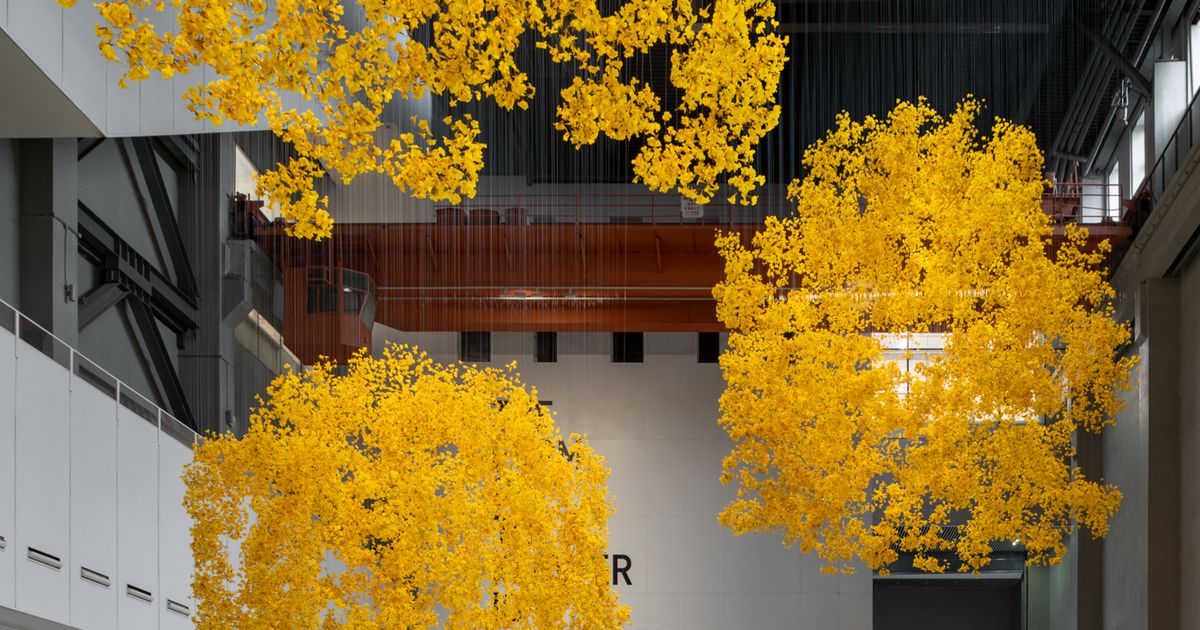The power plant of art announcesS the ceremonial opening of Does the flower hear the bee? the 15th Shanghai Biennale. The exhibition is curated by Chief Curator Kitty Scott, co-curators Daisy Desrosiers and Xue Tan, and curators Long Yitang and Zhang Yingying, both selected from PSA's Emerging Curators Project. The exhibition design is led by all(zone) / Rachaporn Choochuey, Sara De Bondt is the graphic designer and Sarah Demeuse is the editor. TThe urban projects of the 15th Shanghai Biennale will be open to the public several of Shanghai's iconic urban spaces—Jia Yuan Hai Art Museum, VILLA tbh, Shanghai, Shanghai Botanical Garden-Penjing Garden and Klee Klee & Friends. During opening week, the Power Station of Art will host a series of public programs including performances, panels, artist workshops and special lectures.
Exhibition theme: Does the flower hear the bee?
Like the flower that “hears” the bee’s wings, the 15th Shanghai Biennale aims to operate at the intersection of various human and non-human intelligence models. It is based on the belief that recent art offers us a privileged space for such investigations, offering an embodied and interconnected sphere in which communities can form stronger bonds with the “more-than-human world.”
We are living in a time of great uncertainty and global emergency that has led to a widespread sense of disorientation. Our world is changing at a pace that exceeds our comprehension and leaves us perplexed and uncertain. When a return to the past is impossible, art offers us potential routes out of despair and malaise and helps us find new ways of living and new forms of sensory communication amid this instability.
Conceived in dialogue with the ideas of artists, curators, intellectuals, musicians, poets, scientists and writers, Does the flower hear the bee? recognizes that much depends on our ability to sense the world around us and tune in to its diverse intelligences. Her hopeful vision relies on art's ability to point us toward an unknown future.
67 participating artists and collectives from all over the world
This edition of the Biennale will feature over 250 works by 67 individual artists and collectives from around the world, including 16 from China. OVersion 30 works are put into operation or new.
Participating artists (listed alphabetically by last name): Kim Adams, Abbas Akhavan, Allora & Calzadilla, Francis Alÿs, Ryoko Aoki, Carmen Argote, Shuvinai Ashoona, Alvaro Barrington, Lêna Bùi, Tania Candiani, Maxime Cavajani, Carolina Caycedo, Chen Ruofan, Cheng Ngahina Hohaia, Hu Xiaoyuan, Huang Yongping, Ulala Imai, Aki Inomata, Brian Jungs, Lotus L. Kang, Amar Kanwar, Christine Sun Kim, Ragnar Kjartansson, Jaffa Lam, Lina ReversytUhLiu Shuai, Sharon Lockhart, Liz Magor, Gordon Matta-Clark, Ari Benjamin Meyers, Audie Murray, Kosen Ohtsubo, Christian KOhun Alborz Oldham, Lisa Oppenheim, Plant South Salesroom, Qiu Shihua, RH Quaytman, Walid Raad, Shao Chun, Shanon Shin, Tan Jing, Tann Te Ao, Luke Willija, Gö, Gö, Gö, Gö, Gö, Gör, Evelyn Taocheng Wang, Xu Tantian, Ami Yangak, Haegue Yang, Masaomi, Crossing Yangaga, Cansu Yangan, Gozo Yangomasu, Zhou, Zhou Tao
*Maxime Cavajani and Theaster Gates participate in the City Project of the Biennale at the Jia Yuan Hai Art Museum. The works of Rirkrit Tiravanija, Chen Ruofan and Zhou Tao are exhibited in both the Biennale's Power Station of Art and City Project at the Jia Yuan Hai Art Museum. Liu Shuai participates in the City Project of the Biennale at Jia Yuan Hai Art Museum and VILLA tbh, Shanghai.
Exhibition design: “Walking through a garden-like landscape”
The focus of the 15th Shanghai Biennale is the interactions between different forms of life. The exhibition unfolds as an open landscape – a space to wander through rather than move around. Works of art are spread throughout the Power Station of Art – anchored in the large hall, threaded through traffic routes, hidden in closed rooms and gallery spaces. It is not a path to be followed, but a terrain to inhabit – where works of art, architecture and visitors coexist in changing relationships.
The scenography treats the building itself as a landscape. Raw concrete blocks – the same industrial vocabulary as architecture – form a man-made terrain throughout the space. Like rock formations in a garden that shape the view of the landscape, these blocks offer various vantage points for viewing the works of art. They are practical and designed for a second life: after exhibition they can be recycled and not thrown away.
The design is based on the garden – not as decoration, but as a spatial principle. Like a Chinese scholar's garden or a Japanese strolling garden, the exhibition gradually reveals itself. As you move, lines of sight shift and new compositions emerge. Enclosed spaces offer moments of immersion, a different quality of attention. There is no set path, just an invitation. The exhibition offers moments to wander, to pause, not to rush, but to rest and reflect, among other things. Visitors become part of the ecology – another form of life that moves through and shapes space. The exhibition design team all(zone) / Rachaporn Choochuey trusts visitors to find their own rhythm – spacious enough to wander in, structured enough to explore. These pauses are not interruptions but are important because they acknowledge that attention increases over time and that reflection occurs in both stillness and movement.
Exhibition publications
The accompanying catalog and reader from This edition is published at the same time as the exhibition. The 400-page catalog prioritizes the voices of the participating artists, features essays by the three curators, and provides detailed documentation of the works on display, while occasional interludes punctuate the book as suggestions for future sounds, poems, or languages.
The reader brings together artists, scientists and writers who explore new forms of reception, from listening as a sustainable practice and forms of attention to the human and non-human to an awareness of materiality and transience. Together, the texts open up a range of affective, communicative and embodied registers.
